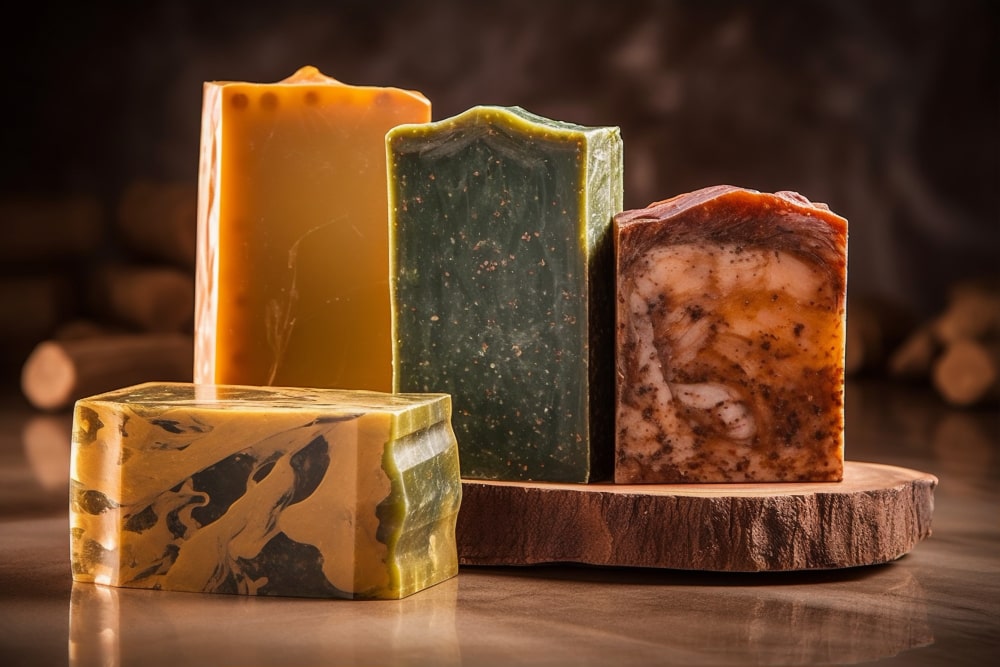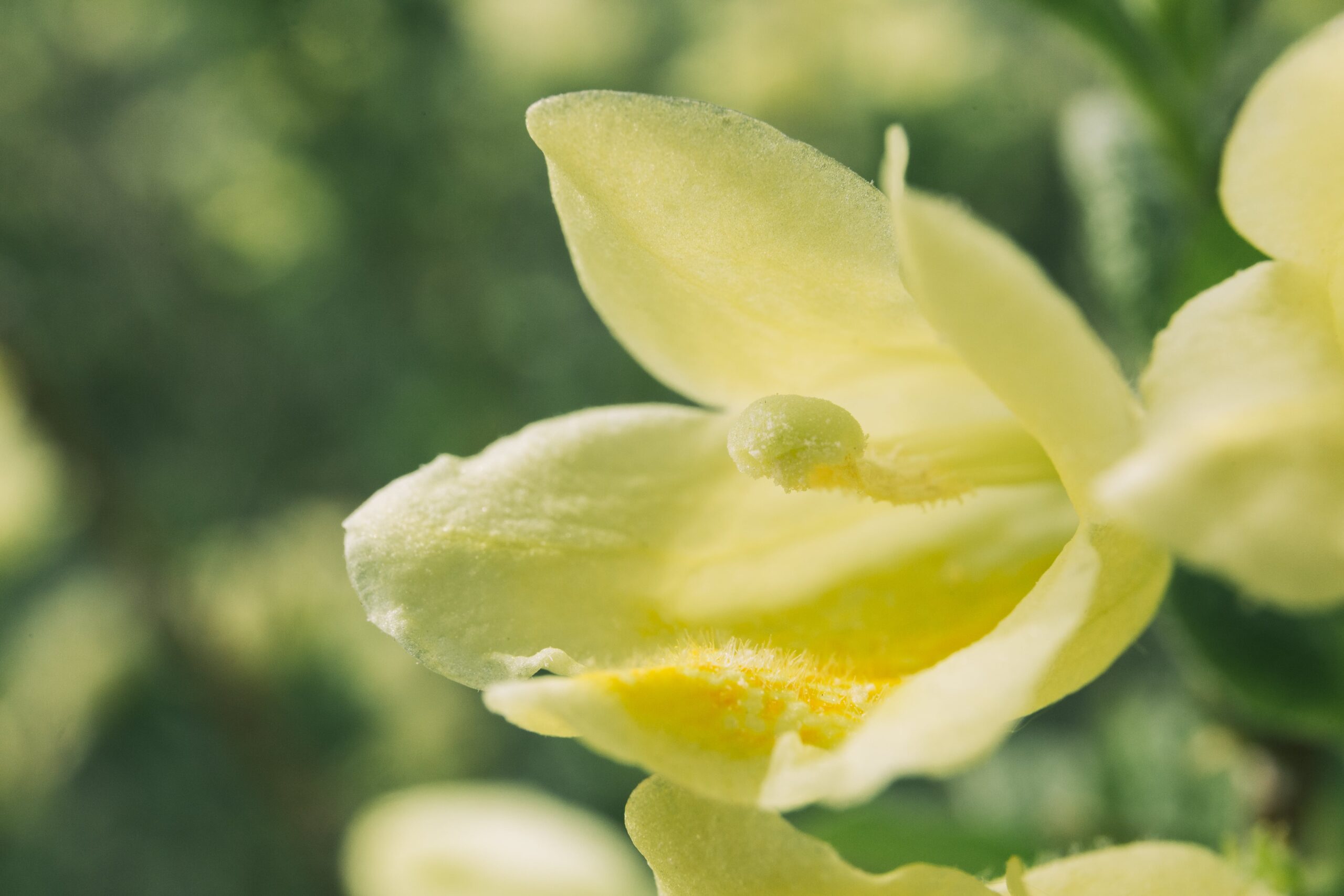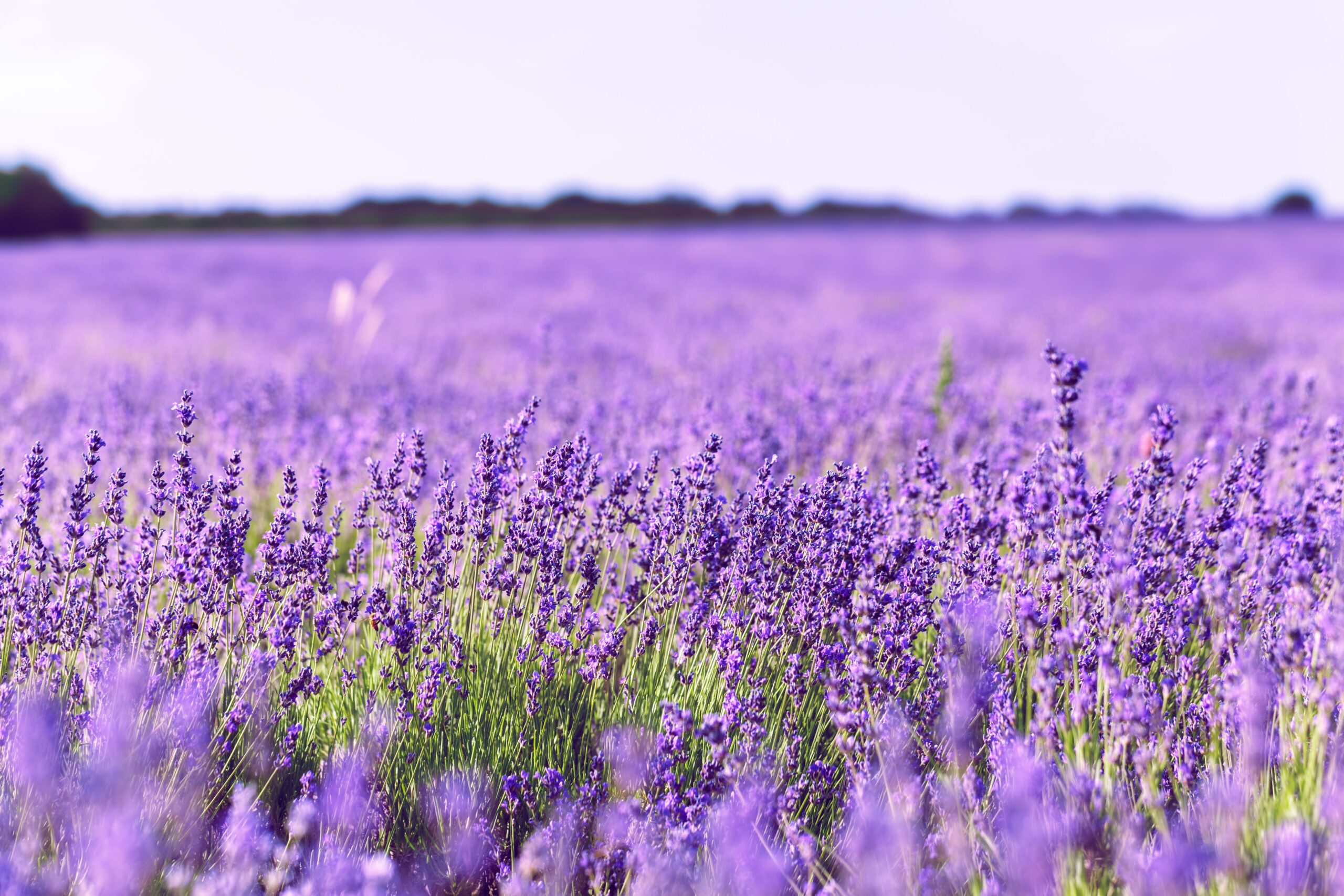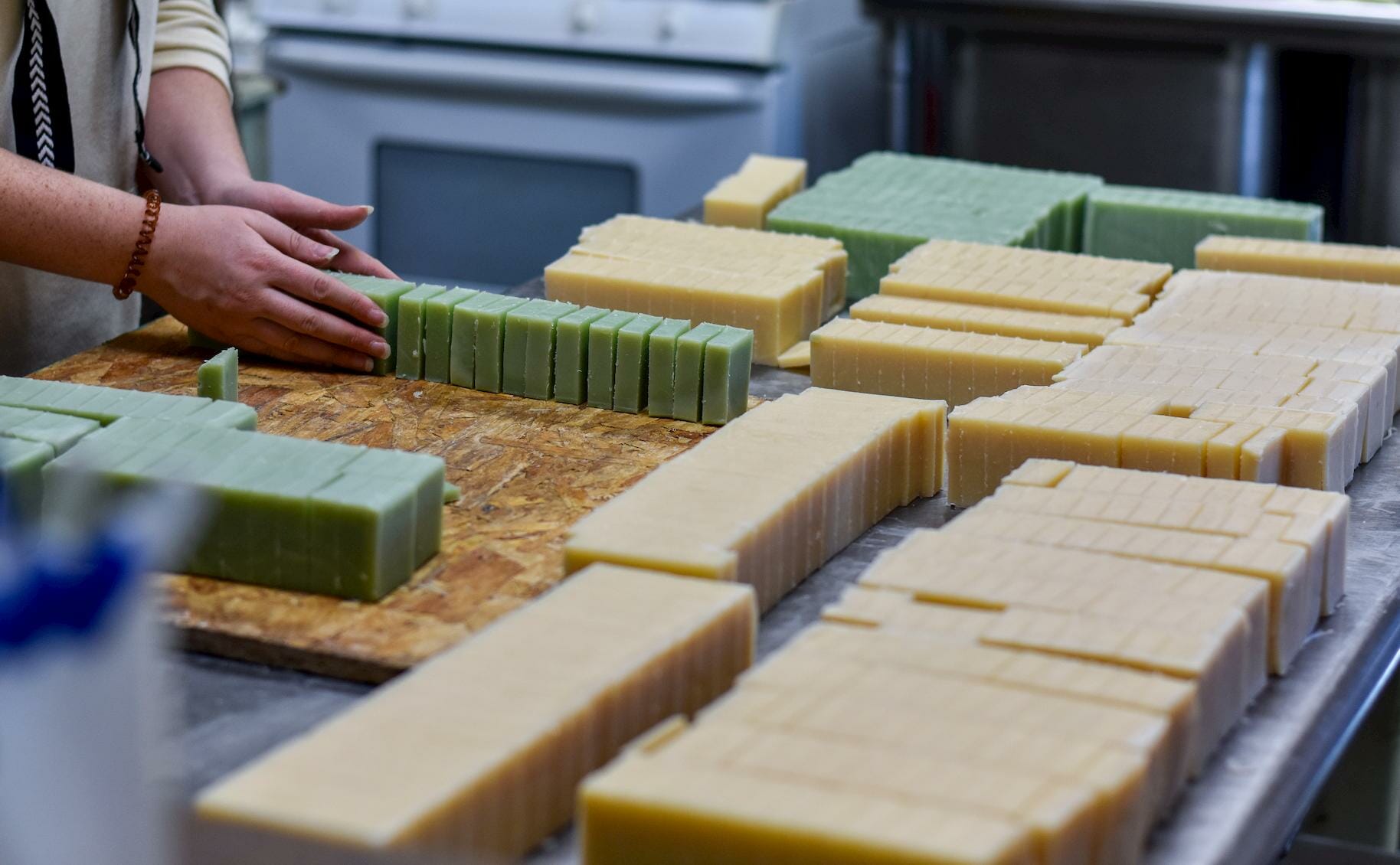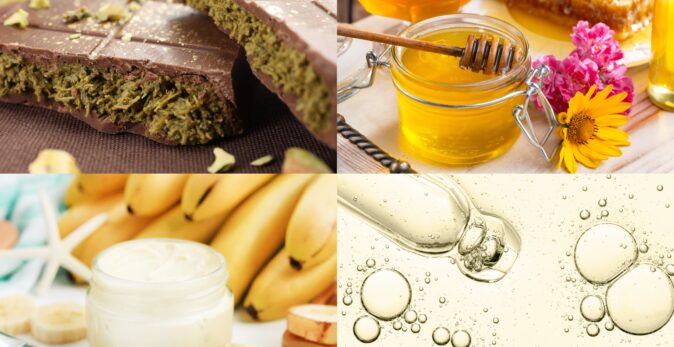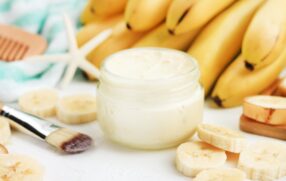Which products are you interested in? 3 in 1 Body Wash Liquid Base 3 in 1 Body Wash Liquid Base Abyssinian Seed Oil (Crambe), Refined Acai Berry Oil, Cold Pressed Acai Berry Oil, Cold Pressed Organic Acai Berry, Butter (COSMOS Natural) Ahiflower Seed Oil, Refined Almond (Sweet) BP73 Oil, Refined Almond (Sweet) EP9 Oil, Refined Almond (Sweet) Oil, Cold Pressed Almond (Sweet) Oil, Cold Pressed Organic Almond (Sweet) Shells, Exfoliant (Irradiated) Almond (Sweet), Butter Almond (Sweet), Cosmetic & Food Grade Oil Refined Almond (Sweet), Wax Almond & Apricot Oil, Blend Aloe Vera & Seaweed, Cosmetic Green Gel Aloe Vera 1:1, Juice Aloe Vera 10:1, Concentrate Aloe Vera 10:1, Concentrate Organic Aloe Vera 200:1, Powder Aloe Vera 200:1, Powder Organic Aloe Vera, Butter Aloe Vera, Cosmetic Clear Gel Aloe Vera, Oily Extract in Coconut Aloe Vera, Oily Extract in Sunflower Alpha Bisabol, Natural Amaranth Oil, Co2 Extract Organic Amaranth Oil, Cold Pressed Amaranth Oil, Cold Pressed Organic Amla Oil, Cold Pressed Amla, Infused in Castor Oil Organic Amla, Infused in Sesame Oil Organic Amla, Infused in Sunflower Oil Amla, Infused in Sunflower Oil Organic Amyris, Essential Oil Andiroba Oil, Cold Pressed Angelica Seed Oil, Cold Pressed Aniseed, Essential Oil Annatto, Oily Extract Apple Seed Oil, Cold Pressed Apricot Kernel Oil, Cold Pressed Apricot Kernel Oil, Cold Pressed Organic Apricot Kernel Oil, Refined Apricot Kernel Oil, Refined Organic Apricot Kernel, Butter Apricot Stones Irradiated, Exfoliant Argan Oil, Cold Pressed Argan Oil, Cold Pressed Deodorised (Commercial Grade) Argan Oil, Cold Pressed Deodorised (P&N) Argan Oil, Cold Pressed Deodorised Organic Argan Oil, Cold Pressed Organic Arnica, Infused in Almond Oil Organic Arnica, Infused in Extra Virgin Olive Oil Arnica, Infused in Extra Virgin Olive Oil Organic Arnica, Infused in Glycerine Arnica, Infused in Grapeseed Oil Arnica, Infused in Hemp Oil Organic Arnica, Infused in Rapeseed (Canola) Oil Arnica, Infused in Safflower Oil Arnica, Infused in Soyabean Oil Arnica, Infused in Sunflower Oil Arnica, Infused in Sunflower Oil Organic Avocado EP9 Oil, Refined Avocado Oil, Cold Pressed Avocado Oil, Cold Pressed Organic Avocado Oil, Refined Avocado Oil, Refined (Cosmetic Grade) Avocado Oil, Refined Organic Avocado, Butter Avocado, Wax Babassu Oil, Refined Babassu Oil, Refined Organic Bacuri Oil, Cold Pressed Bakuchi (Bakuchiol) Oil, Cold Pressed Bakuchi (Bakuchiol) Oil, Refined Bamboo Irradiated, Exfoliant Banana, Infused in Sunflower Oil Banana, Infused in Sunflower Oil Organic Baobab Oil, Cold Pressed Baobab Oil, Cold Pressed Organic Basil (Methyl Chavicol Type), Essential Oil Basil (Methyl Chavicol Type), Essential Oil Organic Basil Holy, Essential Oil Basil Seed Oil, Cold Pressed Basil Sweet (Linalool Type), Essential Oil Basil Sweet (Linalool Type), Essential Oil Organic Basil, Oleoresin 30-40% Batana (Ojon) Oil, Cold Pressed Bay Laurel, Commercial Bay Leaf, Essential Oil Beeswax White (BP/EP) Beeswax White Organic Beeswax Yellow (BP/EP) Beeswax Yellow, Organic Benzoin (Alcohol), Tincture Benzoin Pourable Bergamot (Furocoumarin Free), Essential Oil (COSMOS Natural) Bergamot (Furocoumarin Free), Essential Oil (P&N) Bergamot FCF (Furocoumarin Free), Essential Oil Organic Bergamot, Essential Oil Bergamot, Essential Oil Organic Bilberry Seed Oil, Cold Pressed Birch Sweet (Cosmetic), Essential Oil Birch Sweet, Essential Oil Black Cumin Seed Oil, Cold Pressed Black Cumin Seed Oil, Cold Pressed Organic Black Cumin, Exfoliant Black Lilac Seed Oil, Cold Pressed Black Pepper, Essential Oil Black Pepper, Essential Oil Organic Black Soap Blackberry Seed Oil, Cold Pressed Blackberry Seed Oil, Cold Pressed Organic Blackberry Seed, Exfoliant Blackcurrant Seed Oil 15% GLA, Refined Blackcurrant Seed Oil 15% GLA, Refined (with Rosemary Antioxidant) Blackcurrant Seed Oil, Cold Pressed Blackcurrant Seed Oil, Cold Pressed Organic Blackcurrant Seed, Exfoliant (powder) Blackthorn (Sloe) Berry Oil, Cold Pressed Blueberry Butter (COSMOS Natural) Blueberry Seed Oil, Cold Pressed Blueberry Seed, Exfoliant Bodywash, Liquid Base COSMOS Organic Borage Seed Oil 19% GLA, Refined Borage Seed Oil 20% GLA, Cold Pressed Borage Seed Oil 20% GLA, Cold Pressed Organic Borage Seed Oil 20% GLA, Refined Borage Seed Oil 22% GLA, Refined Brazil Nut Oil, Cold Pressed Organic Brazil Nut Oil, Refined Brazil Nut Oil, Refined Organic Broccoli Seed Oil, Cold Pressed Broccoli Seed Oil, Cold Pressed Organic Bucchu, Essential Oil Burdock Root, Infused in Sunflower Oil Buriti Oil, Cold Pressed Buriti Oil, Cold Pressed Organic Cabbage Seed Oil, Cold Pressed Cacay Oil, Cold Pressed Cacay Oil, Cold Pressed Organic Cactus, Water (Hydrolat) Cade Rectified, Essential Oil Cajeput, Essential Oil Cajeput, Essential Oil Organic Calamansi, Essential Oil Calendula, Infused in Almond Oil Calendula, Infused in Almond Oil Organic Calendula, Infused in Extra Virgin Olive Oil Organic Calendula, Infused in Glycerine Organic Calendula, Infused in Olive Oil (Refined) Calendula, Infused in Rapeseed (Canola) Oil Calendula, Infused in Sesame Oil Organic Calendula, Infused in Soyabean Oil Calendula, Infused in Sunflower Oil Calendula, Infused in Sunflower Oil Organic Camelina Oil, Cold Pressed Camelina Oil, Cold Pressed Organic Camelina Oil, Refined Camellia Oil (Japonica), Cold Pressed Camellia Oil (Japonica), Cold Pressed Organic Camellia Oil (Japonica), Refined Camellia Oil (Japonica), Refined Organic Camellia Oil (Kissi), Refined Camellia Oil (Oleifera), Cold Pressed Organic Camellia Oil (Oleifera), Refined Camellia Oil (Oleifera), Refined Organic Camellia Oil (Oleifera), Refined with Vitamin E Camellia Oil (Sinensis), Cold Pressed Organic Camellia Oil (Sinensis), Refined Camellia, Infused in Sunflower Oil Camellia, Infused in Sunflower Oil Organic Camphor White, Essential Oil Cananga, Essential Oil Candelilla Wax Caraway, Essential Oil Cardamom, Essential Oil Cardamom, Essential Oil Organic Carnation, Absolute Parfum Carnauba (T3) Wax Carnauba, Wax Organic Carotene Infused In Jojoba Organic Carotene, Concentrate Carotene, Infused in Maize (Corn) Oil Carotene, Infused in Sesame Oil Organic Carotene, Infused in Soyabean Oil Carotene, Infused in Sunflower Oil Carotene, Infused in Sunflower Oil Organic Carotene, Infused in Sweet Almond Oil Carrot Seed Oil, Cold Pressed Carrot Seed, Essential Oil Carrot Seed, Essential Oil Organic Cashew Nut Oil, Refined Cassia Essential Oil Castor Oil (BP), Cold Pressed Castor Oil (No1), Refined Castor Oil Refined, Organic Castor Oil, Cold Pressed Organic Castor, Hydrogenated (non Food Grade) Catnip, Essential Oil Cedarleaf (Thuja Leaf Oil), Essential Oil Cedarwood Atlas, Essential Oil Cedarwood Atlas, Essential Oil Organic Cedarwood Himalayan, Essential Oil Cedarwood USA, Essential Oil Cedarwood, Essential Oil Celery Seed, Essential Oil Chamomile Blue, Essential Oil Chamomile Blue, Essential Oil Organic Chamomile German, Water (Hydrolat) Chamomile German, Water Organic (Hydrolat) Chamomile Moroccan, Essential Oil Chamomile Roman, Essential Oil Chamomile Roman, Essential Oil Organic Chamomile Roman, Infused in Almond Oil Chamomile Roman, Water Organic (Hydrolat) Chamomile Roman, Water Preserved (Hydrolat) Chamomile, Infused in Sunflower Oil Chamomile, Infused in Sunflower Oil Organic Chaulmoogra Seed Oil, Cold Pressed Cherry Kernel Oil, Cold Pressed Cherry Kernel Oil, Cold Pressed Organic Cherry Kernel Oil, Refined Chia Seed Oil, Cold Pressed Chia Seed Oil, Cold Pressed Organic Chia Seed Oil, Refined Chickweed, Infused in Sunflower Organic Chilli, Oleoresin Chokeberry Seed Oil, Cold Pressed Cinnamon Bark (Cosmetic), Essential Oil Cinnamon Bark, Essential Oil Organic Cinnamon Leaf, Essential Oil Cinnamon Leaf, Essential Oil Organic Citronella Java, Essential Oil Citronella Java, Essential Oil Organic Citrus Blend, Essential Oil Clary Sage, Essential Oil (COSMOS Natural) Clary Sage, Essential Oil Organic Clementine, Essential Oil Clementine, Essential Oil Organic Cloudberry Seed Oil, Cold Pressed Cloudberry, Infused in Grapeseed Oil Clove Bud & Sweet Orange blend, Essential Oil Clove Bud, Essential Oil Clove Bud, Essential Oil Organic Clove Leaf, Essential Oil Clove Leaf, Essential Oil Organic Clove Stem, Essential Oil Cocoa Butter, Deodorised Cocoa Butter, Refined Organic Cocoa Butter, Unrefined (Natural) Cocoa Butter, Unrefined (Natural) Organic Coconut Oil, Fractionated (MCT) Coconut Oil, Fractionated Organic Coconut Oil, Fractionated with Vitamin D Coconut Oil, Refined Coconut Oil, Refined (IBC) Coconut Oil, Refined Organic (Boxed) Coconut Oil, Unrefined (Virgin) Organic Coconut, Hydrogenated (Food grade) Coffee Green Irradiated, Exfoliant Coffee Green Oil, Cold Pressed Coffee Green, Exfoliant Coffee Roasted Oil, Cold Pressed Coffee, Butter Cognac Green, Essential Oil Comfrey, Infused in Almond Oil Organic Comfrey, Infused in Extra Virgin Olive Oil Comfrey, Infused in Extra Virgin Olive Oil Organic Comfrey, Infused in Sunflower Oil Comfrey, Infused in Sunflower Oil Organic Conditioner, Liquid Base COSMOS Organic Copaiba Balsam (Clarified), Oleoresin Coriander Leaf, Essential Oil Organic Coriander Seed Oil, Cold Pressed Coriander Seed, Essential Oil Coriander Seed, Essential Oil Organic Cosmetic Cream Cosmetic Lotion Cottonseed Oil, Refined Cottonseed, Butter Cranberry & Pomegranate Oil (50/50), Cold Pressed Cranberry Oil, Cold Pressed Cranberry Seed, Exfoliant Cranberry, Butter Cucumber Oil, Cold Pressed Cucumber, Extract Cucumber, Water (Hydrolat) Cumin, Essential Oil Cupuacu Butter Cupuacu Butter, Refined Cypress Blue, Essential Oil Cypress, Essential Oil Cypress, Essential Oil Organic Desert Date Oil, Cold Pressed Dill Seed, Essential Oil Dill Seed, Essential Oil Organic Dragon Fruit Seed Oil, Cold Pressed Echium Seed Oil, Refined Elderberry Seed Oil, Cold Pressed Elderberry Seed Oil, Cold Pressed Organic ElderFlower, Extract (Hydroglycerolic) Elemi, Essential Oil Emulsifying, Wax Eucalyptol USP/BP, Essential Oil Eucalyptus (Brazil), Essential Oil Eucalyptus Blue Mallee, Essential Oil Organic Eucalyptus Citriodora, Essential Oil Eucalyptus Citriodora, Essential Oil Organic Eucalyptus Globulus, Essential Oil Eucalyptus Globulus, Essential Oil Organic Eucalyptus Peppermint (Dives), Essential Oil Eucalyptus Radiata, Essential Oil Eucalyptus Radiata, Essential Oil Organic Eucalyptus Smithii, Essential Oil Eucalyptus Smithii, Essential Oil Organic Eucalyptus Staigeriana, Essential Oil Eucalyptus, Water (Hydrolat) Evening Primrose Oil (10% GLA), Refined Evening Primrose Oil (9% GLA), Refined Evening Primrose Oil, Cold Pressed Organic Fennel Sweet, Essential Oil Fennel Sweet, Essential Oil Organic Fenugreek Herb, Infused in Sunflower Oil Organic Fenugreek Seed Oil, Cold Pressed Fig Seed Oil, Cold Pressed Fir Needle, Essential Oil Flax Seed Oil, Cold Pressed Flax Seed Oil, Cold Pressed Organic Frangipani Absolute Parfum, Infused in Almond Oil (10%) Frangipani, Absolute Parfum Frangipani, Infused in Grapeseed Oil Frankincense (Boswellia Carterii), Essential Oil Frankincense (Boswellia Carterii), Essential Oil Organic Frankincense (Boswellia Frereana), Essential Oil Frankincense (Boswellia Serrata), Essential Oil Frankincense (Boswellia Serrata), Essential Oil Organic Frankincense Water (Hydrolat) Gardenia, Concentrate Garlic Oil 500:1, Deodorised Garlic, Essential Oil Garlic, Infused in Olive Extra Virgin Cold Pressed Oil Garlic, Infused in Sunflower Oil Garlic, Oleoresin 10% Geranium Bourbon, Essential Oil Geranium Bourbon, Essential Oil Organic Geranium Egyptian, Essential Oil Geranium Egyptian, Essential Oil Organic Geranium Water (Hydrolat) Ghee, Butter Ghee, Butter Organic Ginger, Essential Oil Ginger, Essential Oil Organic Gingergrass, Essential Oil Glycerine (Palm Free), Refined Glycerine (Palm Free), Refined Organic Goji Berry, Infused in Sunflower Oil Goji Berry, Infused in Sunflower Oil Organic GoldenWax 464 GoldenWax 494 Gotu Kola (Centella) Leaf, Extract Grapefruit (Pink), Essential Oil Grapefruit (Pink), Essential Oil Organic Grapefruit (White), Essential Oil (P&N) Grapefruit (White), Essential Oil Organic Grapefruit Pink 5 Fold, Essential Oil Grapefruit Seed Oil, Refined Grapefruit Seed, Extract Grapefruit Seed, Extract Organic Grapefruit White 5 Fold, Essential Oil Grapefruit, Wax Grapeseed EP9 Oil, Refined Grapeseed Oil, Cold Pressed Grapeseed Oil, Cold Pressed Deodorised Organic Grapeseed Oil, Cold Pressed Organic Grapeseed Oil, Cosmetic & Food Grade Oil Refined Grapeseed Oil, Refined Grapeseed, Wax Guava Seed Oil, Cold Pressed Hazelnut Oil, Cold Pressed Hazelnut Oil, Cold Pressed Organic Hazelnut Oil, Refined Helichrysum, Essential Oil Helichrysum, Essential Oil Organic Helichrysum, Infused in Almond Oil Organic Hemp Seed Oil, Cold Pressed Hemp Seed Oil, Cold Pressed Organic Hemp Seed Oil, Refined Hemp Seed Oil, Refined with Vitamin E Hemp, Butter Hiba Wood, Essential Oil Hibiscus, Exfoliant Hibiscus, Exfoliant Organic Hibiscus, Infused in Sunflower Oil Hinoki Wood, Essential Oil Ho Wood, Essential Oil Honey Myrtle, Essential Oil Honeysuckle, Absolute Honeysuckle, Absolute Infused in Grapeseed Oil (5%) Hop, Essential Oil Horse Chestnut, Infused in Glycerine Horse Chestnut, Infused in Sunflower Oil Hyacinth, Absolute Hyssop, Essential Oil Hyssop, Essential Oil Organic Illipe, Butter Jasmine Absolute Infused in Fractionated Coconut Oil (5%) Jasmine Absolute Infused in Sunflower Oil Organic (5%) Jasmine, Absolute (Grandiflorum) Jasmine, Absolute (Sambac) Jasmine, Absolute Organic (Grandiflorum) Jasmine, Butter Jasmine, Water (Hydrolat) Jasmine, Water (Hydrosol) Jasmine, Water Organic (Hydrolat) Jasmine, Wax Jasminee Absolute Infused in Grapeseed Oil (5%) Jojoba Powder (500-800 micron), Exfoliant Jojoba Seed Oil Golden, Cold Pressed Jojoba Seed Oil Golden, Cold Pressed Organic Jojoba Seed Oil, Refined Jojoba Seed Oil, Refined Organic Jojoba, Butter Jojoba, Wax Juniper Berry, Water (Hydrosol) Juniper Berry, Water Organic (Hydrosol) Juniperberry, Essential Oil Organic Kalahari Melon Seed Oil, Cold Pressed Kalahari Melon Seed Oil, Cold Pressed OrganicK0021 Kale Seed Oil, Cold Pressed Kanuka, Essential Oil Karanja Oil, Cold Pressed Kiwi Seed Oil, Refined Kokum, Butter Kombo, Butter Kukui Nut Oil, Cold Pressed Organic Kukui Nut Oil, Refined Kukui, Butter Labdanum (Cistus Ladaniferous), Absolute Laurel Oil, Cold Pressed Lavandin Extra Blue, Essential Oil Lavandin Grosso, Essential Oil Lavandin Grosso, Essential Oil Organic Lavandin Super, Essential Oil Lavandin Super, Essential Oil Organic Lavender Bulgarian, Essential Oil Lavender English, Essential Oil Lavender English, Essential Oil Organic Lavender French, Essential Oil Lavender High Altitude, Essential Oil Lavender Indian Kashmir, Essential Oil Lavender Spike, Essential Oil Lavender Water (Hydrolat) Lavender Water, Organic (Hydrolat) Lavender, Essential Oil (40/42) Lavender, Essential Oil Organic Lemon Myrtle, Essential Oil Lemon Myrtle, Essential Oil Organic Lemon Seed Oil, Refined Lemon, Essential Oil Lemon, Essential Oil (Terpeneless) Lemon, Essential Oil Organic Lemon, Essential Oil Organic (<15ppm furocoumarins) Lemon, Wax Lemongrass, Essential Oil Lemongrass, Essential Oil (Flexuosus) Lemongrass, Essential Oil Organic Lemongrass, Essential Oil Organic (Citratus) Lime (Expressed), Essential Oil Lime (Expressed), Essential Oil Organic Lime (Steam Distilled), Essential Oil (COSMOS Natural) Lime (Steam Distilled), Essential Oil (Terpeneless) Lime (Steam Distilled), Essential Oil Organic Lime Seed Oil, Refined Lime, Wax Linden Blossom, Absolute Linden Flower, Water (Hydrolat) Lingonberry Seed Oil, Cold Pressed Linseed Oil, Refined Linseed Oil, Unrefined Liquid Crystal Concentrate Liquid Suspending Body Wash Litsea Cubeba (May Chang), Essential Oil Litsea Cubeba (May Chang), Essential Oil Organic Lotion, Liquid Base COSMOS Organic Lotus (Blue) Flower, Infused in Grapeseed Oil Lotus Blossom, Absolute Lupine Seed Oil, Cold Pressed Macadamia Nut Oil, Cold Pressed Macadamia Nut Oil, Cold Pressed Deodorised Organic Macadamia Nut Oil, Cold Pressed Organic Macadamia Nut Oil, Refined Macadamia Nut Oil, Refined (BP/EP) Macadamia, Butter Macadamia, Wax Mafura Seed Oil, Cold Pressed Magnolia Flower, Essential Oil Magnolia Leaf, Essential Oil Maize Seed Oil, Refined (Corn Oil) Mandarin (Green), Essential Oil Mandarin (Green), Essential Oil Organic Mandarin (Red), Essential Oil Mandarin (Red), Essential Oil Organic Mango, Butter (Buckets) Mango, Butter Organic (Buckets) Mangosteen Seed Oil, Cold Pressed Manketti Seed Oil (Mongongo Oil), Cold Pressed Manketti Seed Oil (Mongongo Oil), Cold Pressed Organic Manketti Seed Oil (Mongongo Oil), Refined Manuka, Essential Oil Maqui Berry Seed Oil, Cold Pressed Maqui Berry Seed Oil, Cold Pressed Organic Marjoram (Spanish), Essential Oil Marjoram Sweet, Essential Oil Marjoram Sweet, Essential Oil Organic Marula Seed Oil, Cold Pressed Marula Seed Oil, Cold Pressed Organic Marula Seed Oil, Refined Mastiha, Essential Oil MCT Oil, Fractionated Meadowfoam Seed Oil, Refined Melissa Blend, Essential Oil Melissa, Essential Oil Melissa, Essential Oil Organic Melissa, Water Organic (Hydrolat) Melt & Pour Certified Organic Solid Base Melt & Pour Crystal Suspending Solid Base Melt & Pour Donkey Milk Solid Base Melt & Pour Donkey Milk Solid Base Melt & Pour Foaming Bath Butter Base Melt & Pour Goats Milk Solid Base Melt & Pour No Sweat (NS) - Clear Solid Base Melt & Pour No Sweat (NS) - White Solid Base Melt & Pour Non Certified Organic Solid Base Melt & Pour Non Certified Organic Solid Base Melt & Pour Oatmeal & Shea Solid Base Melt & Pour Oatmeal & Shea Solid Base Melt & Pour OPC-LP Solid Base Melt & Pour Shea Solid Base Melt & Pour SLS - Free Clear Solid Base Melt & Pour SLS - Free White Solid Base Melt & Pour SLS and SLES - Free Clear Solid Base Melt & Pour SLS and SLES - Free White Solid Base Melt & Pour Solid African Black Soap Melt & Pour Solid Conditioner Solid Bar Melt & Pour Solid Crystal RC (Eco Palm Free Base) Melt & Pour Solid Crystal RC (Eco Palm Free Base) Melt & Pour ST - Clear Solid Base Melt & Pour Syndopour 200-MB Shampoo Solid Bar Melt & Pour Triple Butter Base Melt & Pour WST - White Solid Base Menthol, Crystals Milk Thistle Seed Oil, Refined Mimosa, Absolute Mimosa, Extract Mimosa, Wax Monoi, Infused in Coconut Oil Moringa Seed Oil, Cold Pressed Moringa Seed Oil, Cold Pressed Organic Moringa Seed Oil, Refined Mugwort, Essential Oil Mugwort, Essential Oil Organic Murumuru Butter, Refined Murumuru, Butter Mustard Seed Oil, Cold Pressed Mustard Seed Oil, Cold Pressed Organic Myrrh, Essential Oil Myrrh, Essential Oil Organic Myrtle, Essential Oil Myrtle, Essential Oil Organic Natural Benzaldehyde Oil (EU Nat Compliant) Neem Oil, Cold Pressed Neem Seed Oil, Cold Pressed (High Azadirachtin Content) Neem Seed Oil, Cold Pressed Organic Neroli Light, Essential Oil Neroli Natural, Essential Oil Neroli, Essential Oil (P&N) Neroli, Essential Oil Organic Niaouli, Essential Oil Niaouli, Essential Oil Organic Noni Fruit Seed Oil, Cold Pressed Nutmeg, Essential Oil Nutmeg, Essential Oil Organic Oakmoss, Absolute Green 50% Oat Seed Oil, Co2 Extract Organic Oat Seed Oil, Refined Olive BP73 Oil, Refined Olive EP Oil, Refined Olive Extra Virgin Oil, Cold Pressed Olive Extra Virgin Oil, Cold Pressed Organic Olive Leaves, Infused in Extra Virgin Olive Oil Olive Oil, Refined Organic Olive Pomace Oil, Refined Olive Stones, Exfoliant (Irradiated) Olive, Butter Olive, Squalane Olive, Wax Onion Seed Oil, Cold Pressed Onion, Essential Oil Onion, Oleoresin Orange / Neroli, Water (Hydrolat) Orange / Neroli, Water Organic (Hydrolat) Orange Bitter, Essential Oil Orange Bitter, Essential Oil Organic Orange Blood, Essential Oil Orange Blood, Essential Oil Organic Orange Seed Oil, Refined Orange Sweet 5 Fold, Essential Oil Orange Sweet, Essential Oil Orange Sweet, Essential Oil Organic Orange, Butter Orange, Wax Oregano Organic, Infused in Extra Virgin Olive Oil Oregano, Essential Oil Oregano, Essential Oil Organic Oregano, Infused in Sunflower Oil Palm & Rapeseed Oil, Blend Palm Oil, Hydrogenated Palm Oil, Refined (Sustainable / RSPO certified) Organic Palm Oil, Refined (Sustainable/ RSPO Certified) Palm Oil, Unrefined (Sustainable) Palm Oil, Unrefined (Sustainable) Organic Palmarosa, Essential Oil Palmarosa, Essential Oil Organic Palo Santo, Essential Oil Papaya Seed Oil, Refined Paradise Nut Oil, Cold Pressed Parsley Seed Oil, Cold Pressed Parsley Seed, Essential Oil Parsley, Infused in Sunflower Oil Passion Seed Oil, Cold Pressed Organic Passion Seed Oil, Refined Pataua Oil, Cold Pressed Patchouli, Essential Oil Patchouli, Essential Oil Organic Peach Kernel Oil, Refined Peach Kernel, Butter Peach Stones, Exfoliant (Irradiated) Peanut EP/BP Oil, Refined Peanut Oil, Cold Pressed Organic Pecan Nut Oil, Cold Pressed Organic Pecan Nut Oil, Refined Peppermint Black Mitcham, Essential Oil Peppermint English, Essential Oil Peppermint Mentha Arvensis (Cornmint Oil), Essential Oil Peppermint Mentha Arvensis (Cornmint Oil), Essential Oil Organic Peppermint Mentha Piperita (Triple Distilled), Essential Oil Peppermint Mentha Piperita, Essential Oil Peppermint Mentha Piperita, Essential Oil Organic Peppermint Piperita, Infused in Sunflower Oil Peppermint Water, Organic (Hydrolat) Peppermint, Water (Hydrolat) Pequi Seed Oil, Cold Pressed Perilla Seed Oil, Cold Pressed Perilla Seed Oil, Cold Pressed Organic Peru Balsam Petitgrain, Essential Oil Petitgrain, Essential Oil Organic Pine Pumilionis, Essential Oil Pine Sylvestris, Essential Oil Pine Sylvestris, Essential Oil Organic Pine Turpentine, Essential Oil Pink Peppercorn, Essential Oil Pistachio Nut Oil, Cold Pressed Organic Pistachio Nut Oil, Refined Plai, Essential Oil Plum Oil, Cold Pressed Plum Oil, Cold Pressed Organic Plum Seed, Exfoliant Pomegranate Seed Oil, Cold Pressed Pomegranate Seed Oil, Cold Pressed Organic Pomelo, Essential Oil Poppy Seed Oil, Refined Poppy, Butter Pracaxi Seed Oil (Pracachy Oil), Cold Pressed Premium Hair & Bodywash Liquid Base Prickly Pear Seed Oil, Cold Pressed Prickly Pear Seed Oil, Cold Pressed Organic Prickly Pear Seed Oil, Refined Pumice Powder, Exfoliant (large particle) Pumice Powder, Exfoliant (small particle) Pumpkin Seed Oil, Cold Pressed Pumpkin Seed Oil, Cold Pressed Organic Pumpkin Seed Oil, Refined Pumpkin Seed Oil, Refined Organic Quince Seed Oil, Cold Pressed Radish Seed Oil, Cold Pressed Rapeseed Oil (Canola Oil), Cold Pressed Rapeseed Oil (Canola Oil), Cold Pressed Organic Rapeseed Oil (Canola Oil), Refined Rapeseed, Hydrogenated Raspberry Seed Irradiated, Exfoliant Raspberry Seed Oil, Cold Pressed Raspberry Seed Oil, Cold Pressed Organic Raspberry Seed Oil, Cold Pressed with Vitamin E Raspberry Seed Oil, Refined Raspberry Seed, Exfoliant Raspberry Seed, Exfoliant (Ground) Ravensara, Essential Oil Ravensara, Essential Oil Organic Ravintsara, Essential Oil Ravintsara, Essential Oil Organic Rice Bran Oil, Cold Pressed Organic Rice Bran Oil, Refined Rice Bran, Wax Rice Husk, Exfoliant Rose Absolute Infused in Fractionated Coconut Oil (5%) Rose Absolute Infused in Grapeseed Oil (5%) Organic Rose Absolute Infused in Safflower Oil (5%) Organic Rose Absolute, Infused in Grapeseed Oil (5%) Rose Absolute, Infused in Jojoba Golden Oil Organic Rose Geranium Infused in Fractionated Coconut Oil (5%) Rose Geranium, Essential Oil Rose Geranium, Essential Oil Organic Rose Otto (Commercial), Essential Oil Rose Otto, Essential Oil Rose Otto, Essential Oil Organic Rose Water (Hydrolat) Rose Water, Organic (Hydrolat) Rose, Absolute Rose, Absolute (Moroccan) Rosehip Seed Oil, Cold Pressed (O Colour) Rosehip Seed Oil, Cold Pressed (R Colour) Rosehip Seed Oil, Cold Pressed Organic (O Colour) Rosehip Seed Oil, Cold Pressed Organic (R Colour) Rosehip Seed Oil, Refined Rosehip Shells, Exfoliant (powder) Rosehip Shells, Exfoliant (small particles) Rosehip Shells, Exfoliant Organic Rosemary (Camphor), Essential Oil (COSMOS Natural) Rosemary (Camphor), Essential Oil (P&N) Rosemary (Cineol), Essential Oil (COSMOS Natural) Rosemary (Cineol), Essential Oil (P&N) Rosemary (Cineol), Essential Oil Organic Rosemary (Verbenone), Essential Oil Rosemary (Verbenone), Essential Oil Organic Rosemary, Antioxidant Rosemary, Antioxidant Infused in MCT Rosemary, Antioxidant Infused in Sunflower Oil Rosemary, Antioxidant Organic Rosemary, Oleoresin Rosemary, Water (Hydrolat) Sacha Inchi Oil, Cold Pressed Sacha Inchi Oil, Cold Pressed Organic Safflower High Linoleic Oil, Cold Pressed Safflower High Linoleic Oil, Cold Pressed Organic Safflower High Linoleic Oil, Refined Safflower High Linoleic Oil, Refined Organic Safflower High Oleic Oil, Refined Saffron, Extract Sage Dalmation, Essential Oil Sage Dalmation, Essential Oil Organic Sage White, Essential Oil Sage, Essential Oil Sage, Essential Oil Organic Sandalwood & Amyris blend, Essential Oil Sandalwood Australian, Essential Oil Sandalwood Australian, Essential Oil Organic Sandalwood Indian (Mysore), Essential Oil Sandalwood Infused in Almond Oil (10%) Sandalwood Infused in Fractionated Coconut Oil (2.5%) Sandalwood, Water (Hydrolat) Sapote Oil, Cold Pressed Sea Buckthorn Fruit Pulp Oil, Cold Pressed Sea Buckthorn Fruit Pulp Oil, Cold Pressed Organic Sea Buckthorn Seed Oil, CO2 Extracted Organic Sea Buckthorn Seed Oil, Cold Pressed Seaweed, Oily Extract Seje Seed Oil, Cold Pressed Sesame Seed Oil, Cold Pressed & Deodorised Organic Sesame Seed Oil, Cold Pressed Organic Sesame Seed Oil, Refined Sesame Seed Oil, Refined (BP/EP) Sesame Seed Oil, Toasted Shampoo, Liquid Base COSMOS Organic Shampoo, Liquid Base COSMOS Organic Sheanut Butter, Refined (Boxed) Sheanut Butter, Refined Organic Sheanut Butter, Unrefined Sheanut Butter, Unrefined Organic Sheanut Nilotica Butter, Unrefined Sheanut Nilotica Butter, Unrefined Organic Sheanut Oil, Refined Soap Base Liquid 105 Organic Soap Base Liquid 105 Organic Soap Base Liquid 105 Organic Solid Melt & Pour Crystal SP-SG (Certified Sustainable) Solid Melt & Pour High Clarity Vanilla Stable Base Solid Melt & Pour Natural High Foaming Base Soursop Oil, Cold Pressed Soya (Eco C3), Wax Soya 800 (Non GM), Wax Soyabean Oil (non GM), Cold Pressed Organic Soyabean Oil (Non GM), Refined Soyabean Oil, Refined Soyabean Oil, Refined Organic Soyabean, Partially Hydrogenated (32) Spearmint, Essential Oil Spearmint, Essential Oil Organic Spikenard, Essential Oil Spinach Seed Oil, Cold Pressed Spruce Black, Essential Oil Spruce Black, Essential Oil Organic Spruce Hemlock, Essential Oil Spruce Hemlock, Essential Oil Organic St John's Wort, Infused in Extra Virgin Olive Oil St John's Wort, Infused in Extra Virgin Olive Oil (Extra Strength) St John's Wort, Infused in Extra Virgin Olive Oil Organic St John's Wort, Infused in Sunflower Oil St John's Wort, Infused in Sunflower Oil (Extra Stength) St John's Wort, Infused in Sunflower Oil Organic St Johns Wort, Infused in Rapeseed (Canola) Oil Star Anise, Essential Oil Star Anise, Essential Oil Organic Strawberry Seed Oil, Cold Pressed Strawberry Seed Oil, Cold Pressed Organic Strawberry Seed, Exfoliant Strawberry Seed, Exfoliant (Ground) Sunflower Seed Oil (Hi Linoleic), Cold Pressed Sunflower Seed Oil (Hi Linoleic), Cold Pressed Organic Sunflower Seed Oil (Hi Linoleic), Refined Organic Sunflower Seed Oil (Hi Oleic), Cold Pressed Organic Sunflower Seed Oil (Hi Oleic), Refined Sunflower Seed Oil (Hi Oleic), Refined Organic Sunflower Seed Oil, Refined Sunflower Seed, Wax Sunflower, Lecithin Tagetes, Essential Oil Tamanu Seed Oil, Cold Pressed Tamanu Seed Oil, Cold Pressed Organic Tangerine, Essential Oil Tangerine, Essential Oil Organic Tansy Blue, Essential Oil Tansy Blue, Essential Oil Organic Tarragon, Essential Oil Tea Tree (Australian), Essential Oil Tea Tree (Australian), Essential Oil Organic Tea Tree (South African), Essential Oil Organic Tea Tree Lemon Scented, Essential Oil Tea Tree Lemon Scented, Essential Oil Organic Tea Tree, Essential Oil Thyme (Red), Essential Oil Thyme (White), Essential Oil (P&N) Thyme Sweet (Linalool), Essential Oil Organic Thyme Sweet (Thymol), Essential Oil Organic Tobacco (Nicotine Free), Absolute Tomato Seed Oil, Cold Pressed Tomato Seed Oil, Refined Tonka Bean, Absolute Tuberose, Absolute Tucuma, Butter Tumeric (Curcuma), Essential Oil Tumeric (Curcuma), Essential Oil Organic Ucuuba, Butter Valerian, Essential Oil Vanilla Extract, CO2 (12% Vanillin) Organic Vanilla Extract, CO2 (Min 12% Vanillin) Vanilla Extract, CO2 (Min 8% Vanillin) Vanilla, Absolute Vanilla, Butter Vanilla, Infused in Glycerine (Palm Free Glycerine) Vanilla, Infused in Sunflower Oil Vanilla, Infused in Sunflower Oil Organic Verbena, Essential Oil Vetivert Infused in Fractionated Coconut Oil (5%) Vetivert Java, Essential Oil Vetivert Java, Essential Oil Organic Violet Leaf Absolute, Infused in Jojoba Golden Oil Violet Leaf, Absolute Vitamin E (Tocopherol 70%) Vitamin E (Wheatgerm Variety) Walnut Oil, Cold Pressed Walnut Oil, Cold Pressed Organic Walnut Oil, Refined Walnut Shells Irradiated, Exfoliant Walnut, Butter Watermelon Seed Oil, Refined Wheatgerm Oil, Cold Pressed Wheatgerm Oil, Cold Pressed Organic Wheatgerm Oil, Refined Wheatgerm Oil, Unrefined Wheatgerm Oil, Unrefined (Food Grade) White Hawthorn, Infused in Sunflower Oil Wintergreen (Natural), Essential Oil Wintergreen, Essential Oil Commercial Wintergreen, Essential Oil Organic Witch Hazel (non Alcohol), Distillate Witch Hazel BPC/USP, Distillate 14% Wormwood (Sweet), Essential Oil Ximenia Oil, Cold Pressed Yangu Oil, Cold Pressed Yarrow, Essential Oil Yarrow, Essential Oil Organic Yarrow, Infused in Sunflower Oil Ylang Ylang 1, Essential Oil Ylang Ylang 1, Essential Oil Organic Ylang Ylang 2, Essential Oil Ylang Ylang 3, Essential Oil Ylang Ylang 3, Essential Oil Organic Ylang Ylang Complete, Essential Oil Ylang Ylang Complete, Essential Oil Organic Ylang Ylang Extra, Essential Oil Yuzu Essential Oil
